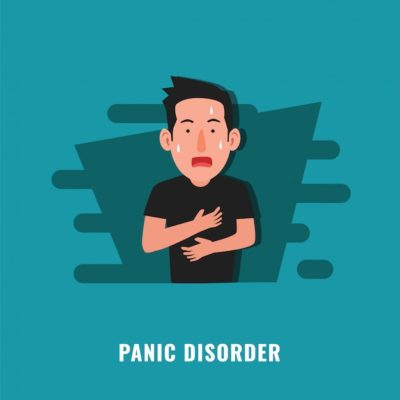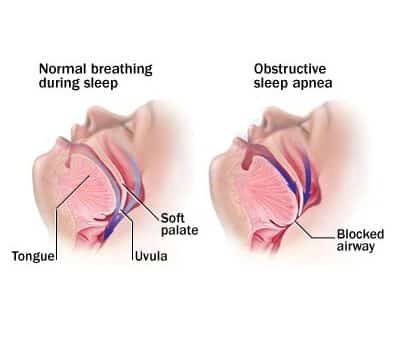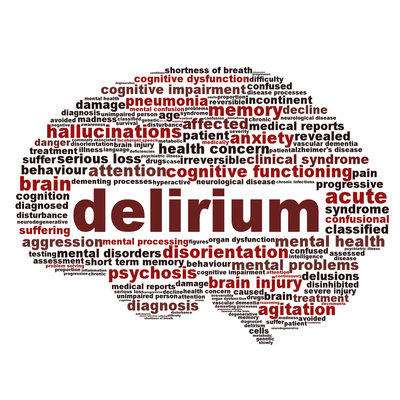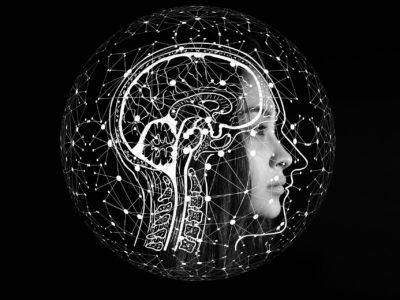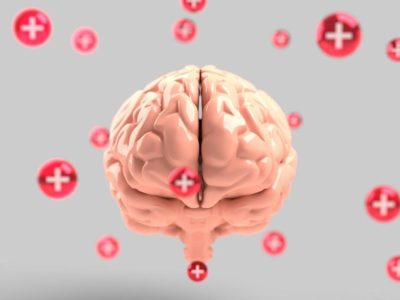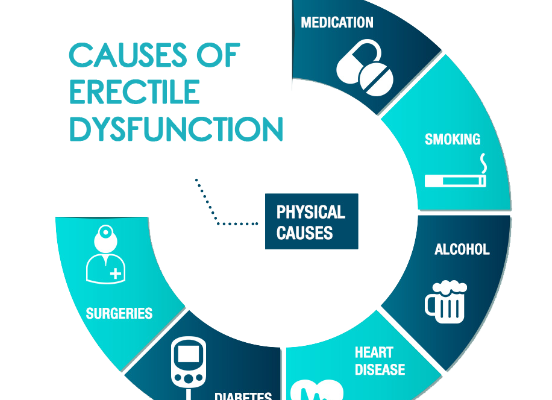
Article topic: Erectile Disorder
Authors: Imad Hatoum
Editor: Lubna AL-Rawabdeh
Reviewer: ُEthar Hazaimeh
Keywords: Alcohol, cardiovascular, hormonal, stress, medications.
Abstract
Background: Among all sexual disorders, erectile disorder (ED) is one of the most known and researched. Attaining less than 10% of men below the age of fifty, and more than 20% above the age of sixty, it is a rather common problem, and therefore an important one to discuss [1].
Methods: medical articles and bibliography were reviewed, combined with expert opinion on the matter.
Results: Erectile dysfunction is, as its name suggests, a problem that prohibits men from having normal erections and thus normal sexual intercourse. The etiologies vary from psychogenic to hormonal to vascular or neurologic, pharmacologic, or even a mix of many. Fortunately, there are numerous diagnostic tools to detect the condition. Moreover, there is no considerable number of complications, and the treatments are various and available with an incredibly good prognosis.
Introduction
Though sexual health remains taboo in a lot of places around the world, it is one of the main concerns of a vast number of people, especially sexually active ones. Disorders and pathologies regarding sexual health are remarkably diverse and can have microbial, psychological, or physiological causes. In this article, we will tackle the issue of erectile disorder from different perspectives: its possible physiological and psychological causes, its presentation, its diagnosis… all the way to the most recent updates about it. This of course is going to be supported by the scientific experiments and studies regarding this matter which constitutes a big problem for a lot of men but also a lot of fear regarding sexual “performance”.
Overview
Erectile disorder or erectile dysfunction is as the name suggests, a problem affecting people with a penis regarding their sexual activity. As defined by the Diagnostic and Statistical Manual-5 (DSM-5), it is presented by at least one of three symptoms that must appear in 75-100% of occasions of sexual activity, these three symptoms being either the difficulty to reaching erection during sexual activity, or the difficulty to maintain erection during sexual activity, or a decrease in the rigidity of the erection [2]. Furthermore, erectile dysfunction can be either primary as in the case where the person never had a normal erection, or secondary as in the case where a person had normal sexual activity but started having problems later. The erectile disorder presents differently whether the cause is organic or psychogenic, when the problem comes from a physical pathology trauma or substance use, the problem manifests as a decrease in intensity and duration in all circumstances as in the case of morning erections, masturbation, sex, But when the source of the problem is psychogenic, its manifestation depends on the mental state of the person; it can occur in depression, or specifically only when wanting to have sex, etc [3].
Moreover, the reason that makes erectile disorder so known is also its prevalence which is believed to grow with age:
- 1-9% of men under forty.
- Less than 10% for men between 41 and 49, though some studies suggest it can go up to 15%.
- Mainly unsure values concerning men between 50 and 60.
- 20-40% for men between 60 and 70.
- 50-100% for men over 70 or 80 years old [3].
Etiology and Pathogenesis
Concerning the etiology of ED, there are, as we said, organic and psychogenic reasons that we will see in detail in the following.
Organic Etiologies
Imbalance in corporal smooth muscle contraction and relaxation at the origin of ED can result from several reasons. Though an anomaly in the nitric oxide/cyclic guanosine monophosphate (cGMP) pathway or cyclic adenosine monophosphate (cAMP) pathway can be the first and most direct reason that comes to mind, we can also find causes that are neurogenic, vasogenic, veno-occlusive, hormonal, and even pharmacogenomic [4]. ED can also appear because of Peyronie’s disease.
- Cardiovascular disease (CVD) and vascular causes
Both having a physiopathology linked to endothelial dysfunction makes ED and CVD narrowly linked. While CVD and all its risk factors (such as chronic kidney disease, and diabetes mellitus…) seem to be a cause of ED, ED itself can also be an early indicator of potential cardiovascular accidents [5].
Moreover, perineal trauma can cause focal arterial occlusive disease thus causing ED by reducing the velocity of systolic pressure in the cavernous arteries to zero [9]. This explains the correlation between cycling on a bicycle that puts high pressure on the perineal region and increased risks of ED [9].
- Neurogenic causes
Trauma to the nerves can also be a cause of ED. One of the common cases is fractures of the femoral bone causing damage to the pudendal nerve resulting in ED for approximately 40% of men [9]. Other neurological causes can be strokes, dementia, multiple sclerosis, spinal injury, radical prostatectomy, and other clinical or accidental trauma [5] … Sudden loss of sexual functions only occurs in the case of prostatectomy and genital tract trauma, whereas the other causes manifest in a more gradual progressive way [5].
- Hormonal and endocrine causes
Low testosterone plays an important role in ED. Hormonal causes include Klinefelter’s syndrome, congenital hypogonadotropic hypogonadism which is exceedingly rare with a prevalence of 1/4000-10000 patients, and acquired hypogonadotropic hypogonadism, as well as cryptorchidism [9].
A lot of endocrine diseases may cause ED; we can count mellitus diabetes, hyperprolactinemia, hyperthyroidism, and hypothyroidism as diseases associated with ED [5]. ] It is important to note that hormonal causes are not common for the young male population.
- Pharmacological causes
Though it may not come to mind as particularly important, 25% of cases of ED have pharmacological sources, a number that must not be ignored [5]. The drugs associated with ED are selective serotonin reuptake inhibitors (SSRI), antihypertensive, and specifically thiazides diuretics, anti-androgens due to their direct effects but also ketoconazole, spironolactone, cimetidine, and sympathetic blockers [5]. However, the effect of SSRI concerning ED was discussed in older studies suggesting that it has no more effect than a placebo in concerning this disorder [9]. The usage of finasteride, a drug used to prevent baldness has shown that it can cause ED, as well as regular use of NSAIDs, and neuroleptics due to their effects causing an increase in prolactin levels and antiepileptics because of their vasogenic activity [9].
Psychogenic etiologies
Depression and ED seem to have a bidirectional relationship, both able to cause one another [6]. Furthermore, we can add stress and relationship issues [5] and hyposexuality [7]. But psychological causes do not stop here, we can also count fear of failure, social pressure regarding sexual performance, familial and religious narratives that are restrictive towards sexuality, mood disorders, sexual identity crisis or instability, fear of sexually transmitted diseases, bad or traumatic previous sexual experiences, distrust or hostility towards the partner, etc [3].
The last thing we should notice about the etiology of ED is that it can be a mix of psychogenic and organic causes at once or it can be an organic one amplified by a psychological one. Therefore, a multidisciplinary approach and assessment of the situation remains the most adequate way to deal with ED.
Clinical presentation and complications
The patient will present complaints of unsatisfactory sexual experiences regarding problems with erection manifesting through one of the three symptoms defined by the DSM-5 and exposed earlier (overview).
Regarding the complications of ED, they are usually more psychological leading to stress, frustration, anxiety, low self-esteem, and in the worst cases depression. Aside from these, ED does not seem to cause long-lasting damage.
Diagnosis
After laying out the etiology, it is only natural to think of the ways that should be followed to diagnose this disorder. Taking history combined with physical examination showed a 95% sensitivity, but a 50% specificity [8]. Complementary tests and dosages can be applied to confirm the diagnosis.
Taking history
Based on all the potential causes we explained it is only logical to ask our patients for any history of surgical procedures, psychological trauma and relationship problems, spinal or pelvic or femoral injuries, their drug use, and even their activities of cycling and their duration [9]. We can equally search for any history of endocrine, vascular, or neurological problems that can be of help to make the diagnosis. An interview with the partner can also be of help. Some questionnaires like the International Index of Erectile Function (IIEF), Sexual Health Inventory for Men (SHIM, or IIEF-5), and Sexual Arousal, Interest, and Drive Scale (SAID) are used to assess libido that we should evaluate while taking history. It is IIEF and SHIM that are more recommended to assess ED as well as the Erectile Dysfunction Inventory of Treatment Satisfaction (EDITS) [8].
Moreover, to differentiate between a physiological problem and a more psychological one. If the patient did not manifest problems until one night, with no history of genital tract trauma or radical prostatectomy, for example, the problem is more likely to be psychogenic since physiological problems appear more sporadically. The presence of spontaneous erections is also an indicator that the patient’s ED is more psychological [8]. Last but not least, check for any other history of sexual disorders and Peyronie’s disease.
Physical examination
Regarding physical examination, it is only natural to check for testicular and penile sizes, as well as eunuchoid body habitus to identify an undiagnosed Klinefelter’s syndrome [9] or search for penile plaques to find an undiagnosed Peyronie’s disease [8]. A check-up on the sexual secondary characteristics can also be of use. The measurement of the femoral and peripheral pulses is important in the search for vascular ED [8]. Furthermore, cremasteric contraction with elevation of the testis is the normal reaction when checking the cremasteric reflex by stroking the inner thighs [8].
Finally, the visual field of the patient should also be evaluated, since problems in the visual field constitute a pattern recurrent in hypogonadal men [8].
Laboratory dosages and other tests:
Hormonal dosages of testosterone, prolactin, and thyroid hormone can be important depending on the etiology the physician is suspecting.
In addition, Nocturnal penile tumescence testing (NPT) can now easily be assessed from home through new monitoring devices [8]. For instance, men with ED but normal nocturnal tumescence have a psychogenic source to their problem.
Furthermore, duplex Doppler ultrasonography and even penile angiography can be used to search for arterial or venous leaks. The test is done while inducing an erection with vasodilating substances [8]. Penile trauma, priapism, Peyronie’s disease, or insensibility to drug-like phosphodiesterase-5 (PDE5) inhibitors can all lead to the use of penile ultrasound to make the diagnosis [8].
Treatment
The treatments can be as mixed as the etiologies! Going from drugs, devices or psychological therapy, solutions to ED are various and numerous.
Drugs and physical treatments
Some behavioral measures can be taken as a first step: stopping smoking and recreational drug use, weight loss and exercise all have proven to be of help for men with ED [9].
Aside from these lifestyle changes, the prescription of PDE5 inhibitors remains the initial solution [10]. PDE5 plays a role in the catabolism of cGMP. By inhibiting PDE5, cGMP remains for a longer time in this active form therefore maintaining and strengthening the person’s erection. It is important to pay attention to interactions with other medications since PDE5 inhibitors are contraindicated in patients taking alpha-blockers and nitrates [10].
Drugs like sildenafil, vardenafil, tadalafil, and avanafil have been proven to be useful [10]. A study showed sildenafil has shown efficacity in ED for men with mild to moderate depression [6], whereas tadalafil has shown efficacity for men taking SSRI [9]. PDE5 inhibitors combined with testosterone have been shown to be useful for hypogonadal men [10].
Other solutions may be the use of vacuum devices, penile injections of alprostadil, papaverine, phentolamine combined with vasointestinal peptide (VIP), or papaverine with alprostadil as a third component can also be used [10]. We can also count the use of urethral alprostadil. To induce an erection by a vacuum device remains the least invasive when compared to implants and urethral suppositories.
Finally, surgical procedures such as the implant of penile prostheses known as penile pumps, or procedures like penile revascularization can be done [10]. However, these procedures are better kept as a last resort because of their invasiveness.
Psychological treatment [3]
The psychotherapy of ED is traditionally done in six steps:
- The first psycho-pedagogic step: consists of explaining to the patient the basic anatomy and physiology of erection thus helping him to visualize and understand his problem.
- The second step is where the therapist teaches the patient techniques of relaxation and stabilization.
- A third step of identification of “targets” in the past of the patient like traumatic experiences or possible memories at the source of the manifestation of ED.
- A fourth step of treatment of these “targets” with adequate and standard protocols.
- The fifth step consists of the usage of the Logie and De Jong “flashforward technique” which basically aims to project the patient the imagination of sexual intercourse and how it can be fulfilling if normal after raising the beginning of the technique questions like: what is the worse that could happen? These procedures provide the therapist with data to analyze in order to direct and help the patient.
- A sixth step consists of the application of the “sensate focus” of Masters and Johnson where the specialist teaches the patient how to focus on his material sensations and reintroduces the patient to the sexual experience without stress or anxiogenic factors.
Since the etiologies of ED can be mixed, and since ED itself can have a psychological impact, this part of treatment should not be completely neglected.
Prognosis
Treatment success rates are remarkably high and the patient, if treated, is highly likely to have normal sexual intercourse.
Risk factors
Between the risk factors, we can count bicycling for lengthy periods of time very frequently, sleep disorders, and pornography [5] … but we can also add psychological and relationship problems, low levels of education, no previous experience of masturbation, psychological problems, no adequate sexual education, as well as smoking and recreational drug use specifically for men under forty [9].
Of course, we can keep in mind the risk factors for all the conditions associated with ED that we discussed in the etiologies.
Recent update: COVID-19 and ED
A recent study found that the prevalence of ED in patients positive for COVID-19 is higher than the prevalence of the normal population suggesting even that ED and COVID-19 have a bidirectional relationship in helping to develop one another. Proof has been found that COVID-19 has a real significant effect on the development of ED [11].
Conclusion
To sum up, it is clear that we can say that erectile disorder is a way more complex condition than we can expect, having various and mixed etiologies both organic and psychogenic. Fortunately, it is a well-studied and well-known condition that has a lot of treatments making it very curable. The most important thing is for the patient not to feel pressured and incompetent and to understand that their problem is a resolvable one. Sexual education still has a long way to go to be understood and accepted by the public, and it is our duty as medical professionals to make it accessible and helpful to all.
References:



